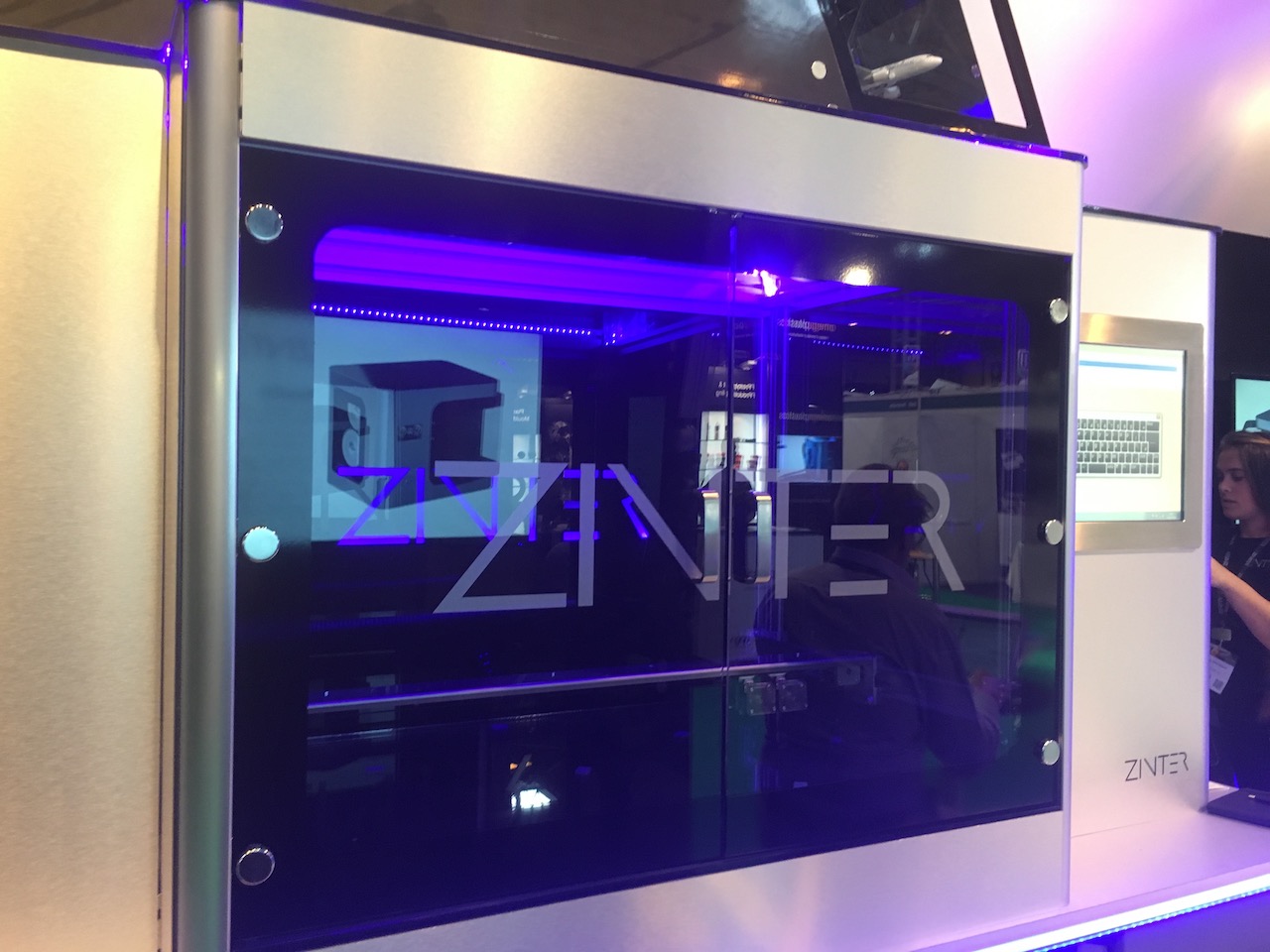
While I was at the TCT show in Birmingham last week, I got to spend some time speaking with Shane Nelson, who has been leading Zinter (previously Ion Core) since 2014.
Based in the South-West of England, Zinter, legally renamed just last month, has produced a 3D printer brand has been eye-catching since its launch in 2012 with a dual focus on form and functionality. Now, after a year of consolidation within the business and strong backing from investors, both the form and world-class functionality of the Zinter 3D printer range is well and truly established with production capabilities locked down in the factory as the company pushes out a dedicated portfolio of 3D printers that meet the demands of its customer base.
I’ve met Shane on numerous occasions previously, but during this interview it struck me that he is a rare breed indeed with a comprehensive blend of engineering knowledge and business acumen. On both fronts the key driver is quality, and ensuring that a high quality product warrants both high quality printed results and user experience. To this end the Zinter brand has been re-engineered from the ground up over the last 10 months, resulting in the Zinter Pro II which will serve as the company’s flagship product and has been extremely well received by partners during testing. Due to start shipping this coming January, the order book is strong. This is due in no small part to the Zinter Pro II being feature-rich and comparing favorably with every other 3D printer in the same category. Shane revealed this was fully intentional and while he acknowledged that none of the standalone features are unique in nature — such as the build-size (300x300x300mm), heated bed, enclosed chamber, 10 micron resolution, superior GUI, quiet running etc — in combination he believes they offer a compelling 3D printing solution. Moreover, the Zinter Pro II has also been engineered to run 24/7/365 — a capability demanded by many of Zinter’s clientele in the aerospace industry, Shane told me.
This close relationship with clients in the aero and defense sector has also driven much of the company’s other R&D over the last 12 months. Zinter has previously announced the Zinter Aero and Zinter Architect 3D printers, which will build on the quality of the Pro II architecture but meet key demands of clients, notably a much larger build chamber of 800x600x600 mm (Architect) and the ability to print with engineering materials such as PEEK, Ultem and Radel (Zinter Aero). Shane told me that the Aero model is in fact the most anticipated product launch for Zinter: “We have a waiting list for this one that is unprecedented.” The Zinter Architect is all but ready to go, and will ship Q1 2017, while the Aero’s shipping dates are still to be finally determined but will certainly be before the end of Q3, Shane confirmed.
And that’s not the end of the story either, because the company’s pro-active research has resulted in the team considering the prospect of combining the capabilities of the Architect and the Aero. Shane’s feedback from clients is that “the market demand for large format PEEK 3D printing is high, in fact, they are screaming out for it.” Obviously there are some stringent technical limitations here, but Zinter is working in partnership with aerospace clients “to overcome these challenges and push the boundaries further than they have ever been pushed before and to demonstrate a real roadmap of intent from the UK.”
At the other end of the scale, Zinter is also looking to offer a smaller form factor version of the Pro II, as yet unnamed. Pitched as an entry level prosumer machine, it will be set up to engage designers and engineers as well as offer out-of-the-box capabilities for educational institutions. That “out-of-the-box” line is much over used in this industry, but in this instance, I do think it applies.
For me the intent from Shane was unmistakable and determined and I came away with little doubt at the man’s integrity and the company’s capabilities to drive their brand of 3D printing clearly and efficiently. This was further compounded by the company’s special projects division, which is an outreach programme that works as a collaborative partnership with Zinter’s clients to deliver bespoke 3D printing solutions for specific projects. Just one example is a current project, sponsored by Google, to ship bespoke ruggedized Zinter 3D printers to countries such as Cambodia for use in modifying wheel chairs to improve the comfort and quality of life for cerebral palsy patients and is a project that Shane and his team are obviously proud to have been a part of.
The way I see it, 2017 is going to be a milestone year for Zinter, and I will be keeping an eye on how it goes for them.
Via Zinter

